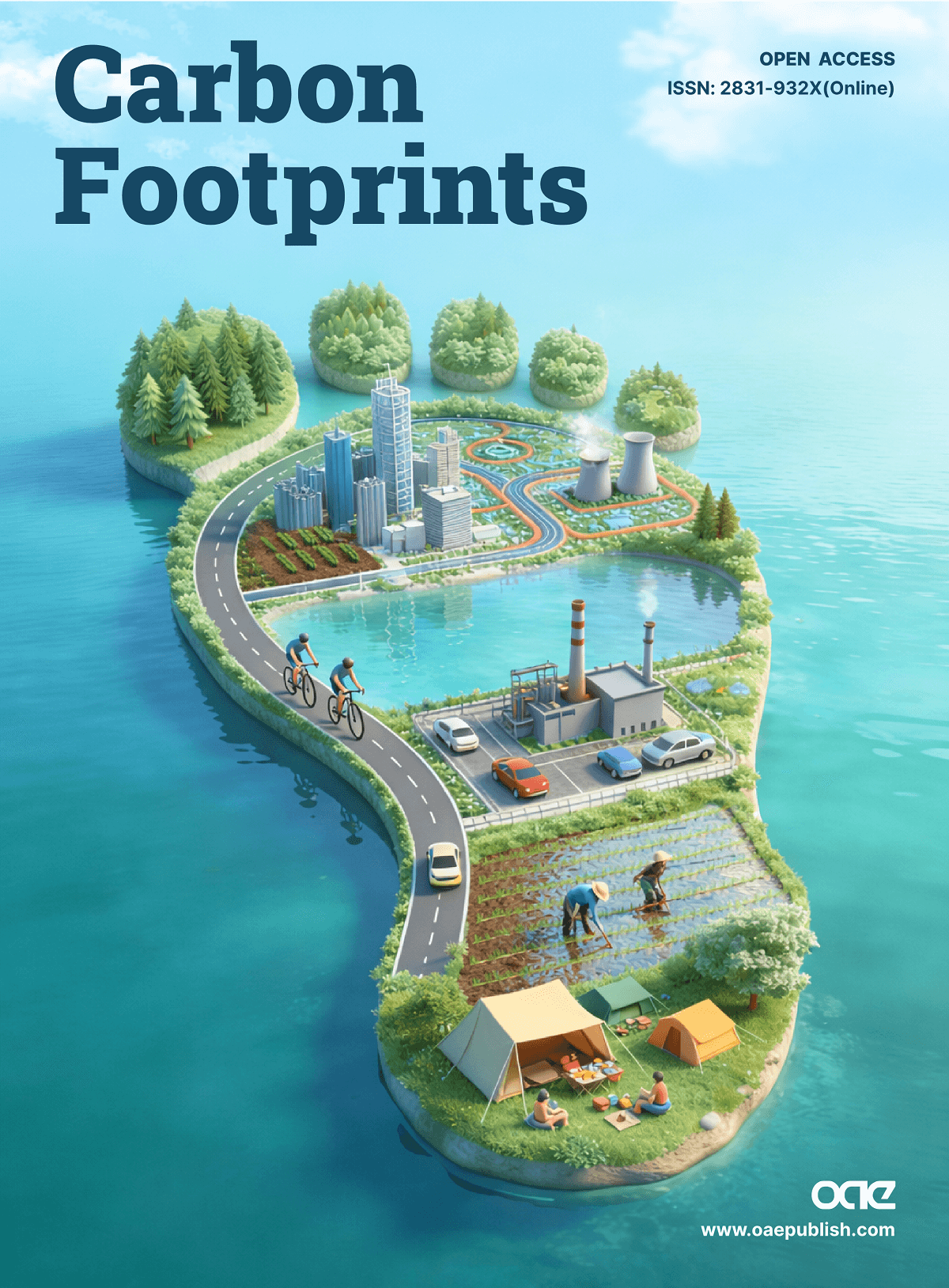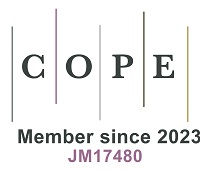Carbon footprints and land-use systems
Abstract
Carbon Footprint (CFP) refers to the emission of all greenhouse gases (GHGs) during a given period by any activity or entity. The standard unit for measuring it is the carbon dioxide equivalent (CO2eq), such that the impact of each GHG is expressed in terms of the amount of CO2 that would create the same amount of warming. It is widely recognized that the 2020 global value for average per capita CFP (estimated as 4.47 Mg CO2eq) is not sustainable and that it must be reduced to < 2 Mg CO2eq if global warming is to be limited to 20C. Recent estimates show that 31% of human-caused GHG emissions originate from the world’s agri-food systems, the major sources being deforestation, livestock production (from enteric fermentation and manure), food waste disposal, and fossil fuel use (by farms and the food-retail sector). Land application of chemicals such as fertilizers, weedicides, and insecticides is the most significant factor in the AFOLU (agriculture, forestry, and other land-use) sector. Enhancement of the natural process of terrestrial C sequestration in soil and vegetation is a widely recognized approach to reducing the AFOLU sector CFP. The adoption of multispecies agroforestry systems with nitrogen-fixing trees is a promising strategy for accomplishing this goal. Another is integrated silvopastoral systems that combine animal production with deep-rooted grass and trees that could counteract the GHG emission through enteric fermentation in animals with enhanced soil C sequestration.
Keywords
CLIMATE CHANGE AND GREENHOUSE GASES
Climate change, undoubtedly the most dominant discussion item in the global environmental agenda for the past two to three decades, revolves around a single element, C (carbon). Carbon dioxide (CO2) is its main atmospheric form and the metric - or currency - in which changes in atmospheric radiative forcing (i.e., global warming) are expressed. Other forms of C that are important from the environmental standpoint also exist, notably methane (CH4). These gases, along with chlorofluorocarbons and nitrous oxide that are collectively called greenhouse gases (GHGs), contribute to the greenhouse effect leading to a rise in atmospheric temperature or global warming. The magnitude of all GHG emissions is expressed as the amount (tons) of CO2 produced during a given period. Furthermore, the CO2 concentration in the atmosphere - rather, its rapidly increasing levels during the past few decades - are the commonly quoted factor that preambles all discussions on climate change. The Mauna Loa station (of the National Oceanic and Atmospheric Administration, USA) records show that the atmospheric concentration of CO2 increased dramatically during the industrial era, with the average decadal CO2 increasing to 2.4 ppm (parts per million) per year during the 2010-2019 period compared to 2.0 ppm per year in the 2000s; the monthly average for January 2022 was 418 ppm vs. 415.5 ppm in January 2021.
GLOBAL EFFORTS IN COMBATING CLIMATE CHANGE
During the past four decades, massive global efforts have been undertaken by the United Nations and its specialized agencies with the involvement of the member countries to combat climate change. The setting up of the Intergovernmental Panel on Climate Change (IPCC) in 1988; the second Earth Summit at Rio de Janeiro, Brazil in 1992, following which 166 countries signed the United Nations Framework Convention on Climate Change (UNFCCC) that acknowledges humanity’s role in global warming; the Conference of Parties (COP) every year that brings together all countries that have ratified the UNFCCC (197 as of 2021); the Kyoto Protocol adopted at the third COP in 1997 at Kyoto, Japan; the Paris Agreement at the COP 21 Summit in Paris in 2015; and the COP 26 Summit at Edinburgh, U.K., in 2021, are some of the landmark events and conferences in this series of global actions. Various countries and groups of countries have committed themselves (e.g., the “Green Deal 27” by the member states of the European Union) to achieving carbon neutrality by 2050, i.e., to ensure that the country/group of countries does not emit more greenhouse gases than it can absorb (known as “net-zero emissions”), targeting a 1.5 °C cap on the rise in standard temperature (Carbon Brief: COP26, Glasgow, 2021: (https://www.carbonbrief.org/cop26-key-outcomes-agreed-at-the-un-climate-talks-in-glasgow). The latest IPCC Report, 28 February 2022, gives a dire warning that humans must accelerate efforts to adapt to the challenges of a warming world and “any further delay in concerted anticipatory global action will miss a brief and rapidly closing window of opportunity to secure a livable and sustainable future for all” (https://www.ipcc.ch/2022/02/28/pr-wgii-ar6). Despite these commendable efforts, serious doubts persist as to how committed the countries concerned are in following up their words with appropriate deeds and fulfilling their avowed commitments. As noted above, the European Union has a clear strategy (the Green Deal 27) and financial commitment to adapt to climate change. On the other hand, in some powerful and large countries, for example, the United States, the response to climate change is a political issue; it is supported strongly by one side and opposed vehemently by the other. The number of climate-change deniers, however, has declined considerably during the past two decades and climate change continues to be a global issue of substantial public concern.
The literature on the topics surrounding climate change is unbelievably massive. Each major global summit involves enormous amounts of preparation with hundreds of delegations and meetings, each with voluminous background materials. For example, the latest IPCC Report released on 28 February 2022, referred to above, contains “a 3,700 page-long (a browser-freezing 280 megabytes) account of the state of the play regarding impacts, vulnerabilities, and adaptation.” (The Economist, 5 March 2022). Then there are numerous scientific and academic publications, and hardly a day passes without a major news item or coverage about climate change in news media and popular press.
CARBON FOOTPRINT: THE CONCEPT
The concept of carbon footprint emerged gradually from the “ecological footprint” (EFP) concept of the 1990s; it was popularized by choosing the “area concept” (the global per capita area of productive land and water ecosystems required for the maintenance of the system) as its primary metric linked to the footprint metaphor[1]. The authors also explain how carbon footprints can be expressed in various ways: per unit product (e.g., of food, feed, fuel, or fiber) in a life cycle analysis, evaluating individual decisions on consumption and lifestyles, or the multifunctionality of land-use can be reflected in aggregated footprint metrics. Lal[2] (2022, this issue of the journal) identifies several sub-components of EFP including resource footprint (RFP) which comprises land (LFP), water (WFP), nitrogen (NFP), biodiversity (BFP), power (PFP), and carbon (CFP). Some might argue - sometimes in a belittling tone - that carbon footprint is just a new name for an old idea and another attention-grabbing entry in the long list of “fancy” terms. Whatever that be, today, CFP has emerged as the nexus for all the “GHG emission-global warming-climate change” discussions on the global environmental scene.
From this journal’s perspective, carbon footprint (CFP) refers to the emissions of all GHGs and is expressed as the amount in tons (1 ton, t, called metric ton in the USA, equals 1 Mg or 106 g) of CO2 produced during a given period (see Section 5 for more details). Although CFP encompasses major sectors of human activities such as land-use systems, energy, and transportation, the journal’s focus is on the CFP of the broad agricultural sector or AFOLU (agriculture, forestry, and other forms of land-use)[3].
The early issues during the first year of the journal will feature scholarly articles (reviews, perspectives, and summaries) on the concept and philosophy of CFP, the extent of CFP in various forms of land-use systems in different geographical regions, the challenges involved in as well as approaches to gathering such information, the potential of the AFOLU sector in influencing CFP, and the opportunities for reducing or even reversing the CFP through some such land-management options.
ESTIMATES OF CARBON FOOTPRINTS OF LAND-USE SYSTEMS
Recent estimates (Nov 2021) by FAO, the UN Food and Agricultural Organization, show that 31% of human-caused GHG emissions originate from the world’s agri-food systems. Of the 16.5 Pg (billion tons) of GHG emissions from global total agri-food systems in 2019, 7.2 Pg came from within the farm, 3.5 from land-use change, and 5.8 from supply-chain processes (New FAO analysis reveals carbon footprint of agri-food supply chain | | UN News, 9 Feb 2022). In 2019, deforestation was the largest source of GHG emissions, followed by livestock production (primarily from enteric fermentation), household consumption, food waste disposal, fossil fuels used on farms, and the food retail sector. The FAO maintains that the food supply chain in many countries is on course to overtake farming and land-use as the largest contributor to GHG from the agri-food system. Moreover, unrelated farm activities and land-use changes currently account for more than half of the CO2produced from agri-food systems in some regions while in developing countries over the past three decades, it has more than doubled. The U.S. Environmental Protection Agency estimates that currently agriculture and forestry together account for 10.5% of the US GHG emissions (0.7 Gg = MMT or million metric tons), while transportation and industry are estimated to account for about 60% of emissions or 4.0 Gg[4].
While such large datasets present the seriousness of the issue at the global or regional scale, they do not show the extent of variations that exist among different regions and within the regions. Authoritative perspectives on the CFP status of some major land-use systems in a few large countries/regions of the world are presented in the early issues of the journal. These include the scenario for the agriculture sector in Brazil[5], forestry and agroforestry sectors in the United States[4], and the AFOLU sector in India[6]. Additional accounts of CFP status under land-use systems in some other regions such as southern Africa and Europe will be included in subsequent issues of the journal this year (2022); these are still under preparation and are therefore not referenced here.
Gama-Rodrigues et al.[5] present an analysis of the status of GHG emissions and CFP in Brazil, one of the main producers in the agricultural and forestry sector worldwide. The main sources of national GHG emissions in Brazil are beef cattle (due to enteric fermentation) and the management of agricultural soils (primarily the use of nitrogen fertilizers). The increasing adoption of low-carbon agriculture has led to a reduction in the carbon footprint through no-till technologies, agrosilvopastoral systems, the use of N2 fixing plants, and the expansion of planted forests. The authors recommend that these technologies deserve to be increasingly disseminated to generate economic opportunities leading to financial gains from the commercialization of carbon credits and payment for environmental services.
Discussing the role of major land-use systems in carbon footprint discussions with special reference to the USA, Udawatta and Jose[4] emphasize the role of forests, grazing lands, and croplands. Forests that cover 4.06 billion ha or 31% of the global land area[7] have a major role in both emitting and storing carbon worldwide. The net of emissions and storage, known as C flux, is expressed usually in tons (or million metric tons, MMT, in the US) of CO2. In addition to the movement of C in and out of the forest, there is also storage of C in different “compartments” of the forest system referred to as C stock. The IPCC recognizes five such storage pools in the forest ecosystem[8]: aboveground biomass, belowground biomass, deadwood, litter, and soil C, and the FAO assumptions are 45% C stock in soil organic matter, 44% in living biomass, 6% in the litter, and 4% in deadwood[7]. In the US, pastureland and rangeland occupy 49.2 and 163.4 Mha and account for 6% and 21% of the total land area[9]. Among the various agroforestry practices, silvopasture is recognized to have the greatest potential to sequester C in temperate North America, but the exact land area under silvopasture is not known. Udawatta and Jose[4] estimate that, in the U.S., 248 Mha of permanent pastures/range, 51 Mha of grazed forests, and 40 Mha of unmanaged forests may offer the potential for conversion to silvopasture; the authors visualize that such conversions could not only improve C accrual but provide various other ecosystem services too. On croplands in the US that cover 149 Mha[9], the carbon sequestration ranges from 0.13 Mg ha-1 yr-1 with no C sequestration management to 0.5 Mg ha-1 yr-1 with C sequestration management[10].
Reviewing the scenario of CFP in India, Kumar and Aravindakshan[6] report that the AFOLU sector contributes 7%-8% of the total CO2 emissions nationally, which is considerably lower than the global estimate of 25% as the sector’s contribution to total emissions, and this has raised the country’s aspirations of reaching net-zero emission by 2070. The authors identify enteric fermentation, fertilizer and manure management, rice paddies, burning of crop residues, forest fires, shifting cultivation, and food wastage as the major CFP issues of the AFOLU sector in India. Further, they project that the emission pathways of the AFOLU sector for 2070 can be leveraged proactively to reach the net-zero emission goals by focusing on increasing forest cover, agroforestry, and other tree-based land-use systems, improving soil health through soil management, and better crop residue and livestock feed management.
Numerous other reports on CFP values of various land-use systems from different situations are also available. Despite the limitations and conditions of the studies concerned, the main point that emerges from these reports is that the CFP levels of commercialized and heavily fertilized monocultural stands of crops and trees are much higher than those of mixed-species stands, especially those involving N2-fixing species and environment-friendly land-management practices. Combined production systems such as various types of agroforestry practices and other forms of conservation agriculture are frequently reported as highly desirable too. Understanding the magnitude of CFP of land-use systems and factors affecting it can lead to the identification of technological options that can enhance the use efficiency of inputs, reduce wastage, and decrease the CFP.
It is worth mentioning in this context that the CFP is not synonymous with the impacts of climate change or global warming. As stated before, CFP is a measure or indicator of the total emissions of all GHGs by an entity or activity. High levels of CFP lead to an increase in global warming that could have various adverse impacts on the AFOLU and other sectors and the overall environment: sea-level rise, increased frequency of anomalies such as droughts, floods, and forest fire, biodiversity changes above- and belowground, and so on. From the agricultural and land-use perspective, even relatively small changes (1 0C to 2 0C) in atmospheric temperature could lead to serious effects on the growth and performance of some temperature-sensitive crops. For example, the world-renowned arabica coffee (Coffea arabica) in the East African highlands of Kenya and Ethiopia is being replaced by the less preferred robusta coffee (Coffea canephora) that can withstand higher temperature than the arabica coffee. Even such modest changes in temperatures could also cause a significant increase in the incidence of pests and diseases that damage these crops. The shaded perennial agroforestry systems where shade- adapted crops such as coffee and cacao (Theobroma cacao) could conveniently be grown with reduced exposure to direct sun and higher temperature are alternative approaches to withstand such climatic situations (Nair et al.[11]2021, Chapter 8). Another example of the effect of climate change is the huge dieback of largescale forest plantations of Norway spruce (Picea abies) in Central Germany, where “scientific” monocultural forestry has originated and been successfully practiced for three centuries (Science 374, issue 6572, 1184 - 1189, 3 December 2021.
MEASUREMENT AND ESTIMATION OF CARBON FOOTPRINT
It is customary to mention numerical values of CFP and global warming potential for every activity or practice that is mentioned in reports related to climate change and the environment. The standard unit for CFP is the carbon dioxide equivalent (CO2eq) expressed as parts per million by volume, and the impact of each greenhouse gas is expressed in terms of the amount of CO2that would create the same amount of warming. Thus, a CFP consisting of different GHGs can be expressed as a single number. Standard ratios are used to convert the various gases into equivalent amounts of CO2. These ratios are based on the so-called Global Warming Potential (GWP) of each gas, which describes its total warming impact relative to CO2over a set period (or “time horizon,” usually 100 years). Over this time frame, according to the standard data, methane has a score of 25 (meaning that one ton of methane will cause the same amount of warming as 25 tons of CO2), nitrous oxide has a score of 298. The choice of a time horizon is a critical element in the definition. A gas that is quickly removed from the atmosphere may initially have a large effect and become less important over longer periods as it gets removed. Methane, for example, has a warming potential of 25 over 100 years, but 72 over 20 years. Therefore, the impact of methane and the strategic importance of tackling its sources depends on whether we are more interested in the next few decades or the next few centuries. The 100-year time horizon set by the Kyoto Protocol puts more emphasis on near-term climate fluctuations caused by emissions of short-lived species (like methane) than by emissions of long-lived GHGs. The GWP value depends on how the gas concentration decays over time in the atmosphere, and since this is often not precisely known, the values are not considered exact. Nevertheless, the concept of the GWP is generally accepted as a simple tool to rank emissions of different GHGs. Carbon footprint values are also expressed on an annual, per capita basis for different countries and regions. The values (Mg CO2eq/person/year) for 2020 listed by Lal[2] range from as low as 0.1 in Niger to 18.58 in Canada, with a global average of 4.48. In general, however, the global averages of indicators related to human well-being and prosperity are projected mostly as symbolic gestures and, understandably, they keep changing. The current (early 2022) standards are that for attaining the goal of limiting global warming to 20C, the global average per capita CFP of humanity may be reduced to < 2 Mg CO2eq.
The standards and datasets on CFP, GWP, and related terms are usually computed or estimated for a location or region, except in focused experiments, based on the recommendations and instructions from international entities such as IPCC and the national and regional bodies. For example, the IPCC recommends that enteric emission estimates in Brazil can be made with a simplified procedure, using the average data of Latin America[12] that ranges from 56 (Tier 1) to 70 kg CH4 animal-1 y-1 (Tier 2), but regional and specific emission factors should be used when available. Moreover, different methodologies exist for estimating the values for the whole systems or their parts, as well as for the whole lifecycle or specific segments of the life cycle. Therefore, the CFP values reported for various systems can vary considerably: see, for example, papers in this volume by Lal[2], and country-specific reports by Gama-Rodrigues et al.[5] for Brazil, and Udawatta and Jose[4] for North America.
Methods for measurement and computation of C sequestration in terrestrial systems are still uncertain (see Chapter 20, Nair et al.[11], 2022). Modeling soil carbon using artificial intelligence (AI) - machine learning and deep learning algorithms - has emerged as a powerful force in the carbon science community. Reviewing the recent developments in these exciting areas, Grunwald[13] reported that these AI soil carbon models have shown improved performance to predict soil organic carbon, soil respiration, and other properties of the global carbon cycle when compared to other modeling approaches.
LAND-MANAGEMENT OPTIONS FOR REDUCING CFP
The rapidly swelling literature on CFP emphasizes the dominant impact of agriculture on CFP and prescribes land-management options for reducing it as exemplified in the CFP status reports from a few large countries/regions presented in this issue of the journal. As mentioned earlier, all segments of the food and agricultural sector related to the production, processing, transportation, and storage, as well as preparation of food and disposal of food wastage, have negative CFP impacts to varying degrees. The most significant and indelible footprints, however, are caused by the soil application of chemicals such as fertilizers, weedicides, and insecticides; some reports suggest that the application of nitrogen fertilizers to crops alone is responsible for 75% of total emissions[2]. Burning of cereal crop residues in the grain belt of India is a traditional practice that has been widely recognized - indeed dramatized as “Fields on Fire”[14] - as a major source of carbon emission and environmental pollution causing serious consequences.
Compared with the other major sectors, however, the AFOLU sector has the unique potential to remove CO2 from the atmosphere and sequester it in soil via appropriate land management measures. These include reduced tillage operations (minimum tillage), reduced chemical inputs (including fertilizers, herbicides, and insecticides), and the adoption of appropriate farming systems such as agroforestry to enhance photosynthetic carbon capture. Many of these issues are described in detail in the authoritative papers that follow in the early issues of this journal.
One of the widely recognized approaches to reducing CFP of agriculture and land-use is to enhance terrestrial sequestration of carbon. This can be accomplished by promoting the natural process of C sequestration in soil and vegetation such that atmospheric CO2 is removed via photosynthesis and stored in the biomass and soils of terrestrial ecosystems for extended periods (> 100 years). Some ecosystems, such as the grasslands, are well known for their ability to store high amounts of soil organic C because of the deep root systems of grasses as well as their resilience to rising temperatures, drought, and fire, such that the sequestered terrestrial C is stored in belowground sinks and prevented from re-entering the atmosphere (https://www.fs.usda.gov/ccrc/topics/grassland-carbon-management). At the same time, frequent occurrences of devastating forest-and-grassland fires around the world, often portrayed as caused and exacerbated by unmitigated climate change, turn these substantial C sink ecosystems into major C sources. Alternative land management options such as silvopastoral and other forms of agroforestry systems[15] are being tried to maintain such climate-vulnerable forests and grasslands as C sinks and avoid the risk of them becoming C-emitters.
The concept of agroforestry is based on traditional experience supported by modern scientific evidence about the proven role of on-farm and off-farm tree production in supporting sustainable land-use and natural resource management. While the aboveground and belowground diversity provides more stability and resilience for the system at the site level, the system provides connectivity with forests and other landscape features at the landscape and watershed levels[14,15]. These ecological foundations of agroforestry systems manifest themselves in providing environmental services such as soil conservation, carbon storage, biodiversity conservation, and enhancement of water quality, all of which are directly related to the concept of CFP. Silvopastoral and other agroforestry management options are widely acknowledged to offer enormous possibilities in this direction (Nair et al.[11]2021, Chapter 20).
CONCLUSIONS
A common adage that is attributed to Albert Einstein reads “The significant problems we face today cannot be solved at the same level of thinking we were at when we created them. It is very true today in the context of the global enthusiasm and efforts in addressing the issue of carbon footprints, and it is an issue of relevance to all humanity. The adverse impacts of increasing carbon levels in the atmosphere and the recognized impacts of human activities on carbon emissions, i.e., carbon footprint, are of considerable importance to all. Concerted efforts are being undertaken by the global community at all levels to address this threat of an apocalyptic nature. Certainly, the land-use-systems community at every level, from farmers and other land-users to scientific professionals, administrators, and policymakers, ought to be committed fully to addressing this issue of gargantuan proportions. The launch of this new scientific journal, Carbon Footprints, is a tiny part of that massive effort, and we are enthusiastically looking forward to the opportunity for making our humble contributions to the fight against climate change and global warming.
DECLARATIONS
Acknowledgments
The author is grateful to M. Rosa Mosquera Losada and Vimala Nair, members of the Editorial Board of Carbon Footprints, and Gregory G. Toth, PhD, Natural Resources Analyst and Consultant, Tokyo, Japan, for their review and helpful suggestions for improvement of the manuscript.
Authors’ contributions
The author contributed solely to the article.
Availability of data and materials
Not applicable.
Financial support and sponsorship
None.
Conflicts of interest
The author declared that there are no conflicts of interest.
Ethical approval and consent to participate
Not applicable.
Consent for publication
Not applicable.
Copyright
© The Author(s) 2022.
REFERENCES
1. van Noordwijk M, Pham TT, Leimona B, et al. Carbon footprints, informed consumer decisions and shifts towards responsible agriculture, forestry, and other land-uses? Carbon Footprints. Forthcoming 2022.
2. Lal R. Reducing carbon footprint of agriculture and food systems. Carbon Footprints. Forthcoming 2022.
3. Nair PKR. Carbon footprints: Introducing a new peer-reviewed, open access, international journal. Carbon Footprints 2021;1:1.
4. Udawatta R, Jose S. Carbon sequestration by forests and agroforests: a reality check for the United States. Carbon Footprints. Forthcoming 2022.
5. Gama-Rodrigues EF, Gama-Rodrigues AC, Vicente LC, et al.
6. Kumar BM, Aravindakshan S. Carbon footprint issues of the Indian agriculture, forestry, and other land use (AFOLU) sector. Carbon Footprints. Forthcoming 2022.
8. IPCC. 2006 IPCC guidelines for national greenhouse gas inventories. Available from: https://www.ipcc.ch/Documentation/ [Last accessed on 7 Apr 2022].
9. USDA. USDA 2017 National Resources Inventory Summary Report, US Department of Agriculture, Washington DC.
10. Sperow M, Eve M, Paustian K. Potential soil C sequestration on U.S. agricultural soils. Climate Change 2003;57:319-339.
12. IPCC. Climate change and land: an IPCC special report on climate change, desertification, land degradation, sustainable land management, food security, and greenhouse gas fluxes in terrestrial ecosystems Summary for Policymakers. The Intergovernmental Panel on Climate Change. Summary for Policymakers - Special Report on Climate Change and Land (ipcc.ch). Available from: https://www.ipcc.ch/srccl/ [Last accessed on 7 Apr 2022].
13. Grunwald S. Artificial intelligence and soil carbon modeling demystified: power, potentials, and perils. Carbon Footprints. Forthcoming 2022.
14. Shyamsundar P, Springer NP, Tallis H, et al. Fields on fire: alternatives to crop residue burning in India. Science 2019;365:536-8.
15. Garrett HE, Jose S, Gold M. North American Agroforestry, 3rd ed. New York: Wiley; p.576 Available from: https://www.wiley.com/en-us/North+American+Agroforestry%2C+3rd+Edition-p-9780891183778 [Last accessed on 7 Apr 2022].
Cite This Article
How to Cite
Download Citation
Export Citation File:
Type of Import
Tips on Downloading Citation
Citation Manager File Format
Type of Import
Direct Import: When the Direct Import option is selected (the default state), a dialogue box will give you the option to Save or Open the downloaded citation data. Choosing Open will either launch your citation manager or give you a choice of applications with which to use the metadata. The Save option saves the file locally for later use.
Indirect Import: When the Indirect Import option is selected, the metadata is displayed and may be copied and pasted as needed.

















Comments
Comments must be written in English. Spam, offensive content, impersonation, and private information will not be permitted. If any comment is reported and identified as inappropriate content by OAE staff, the comment will be removed without notice. If you have any queries or need any help, please contact us at [email protected].